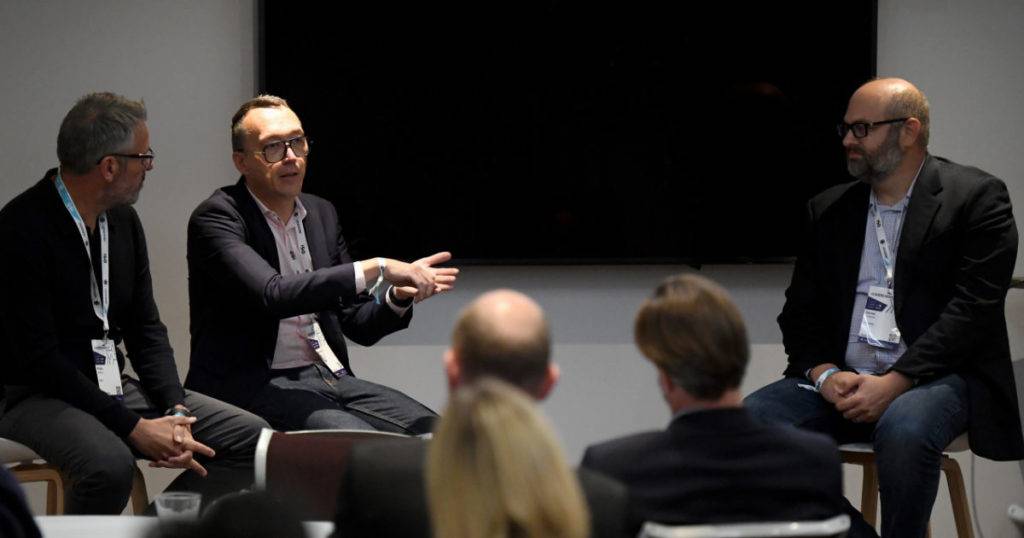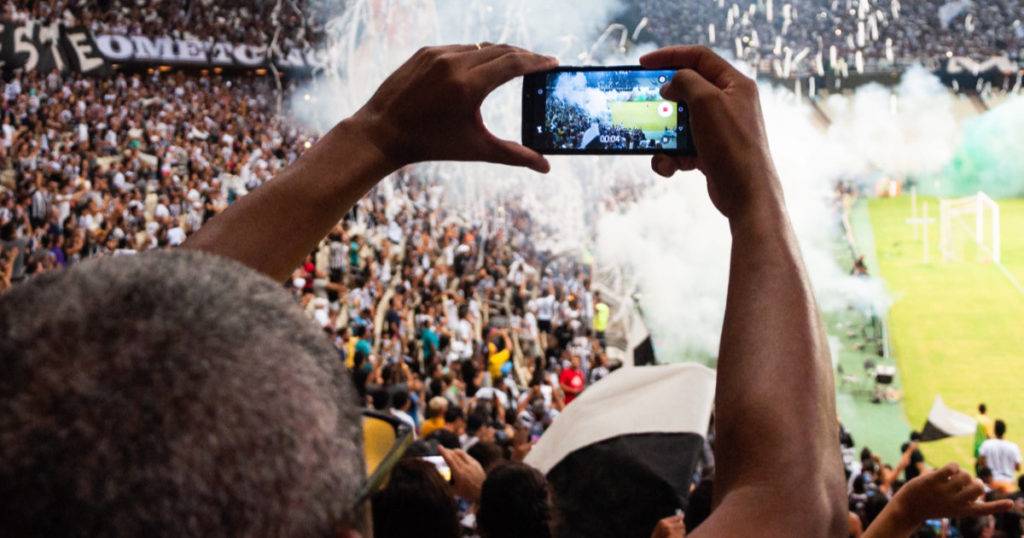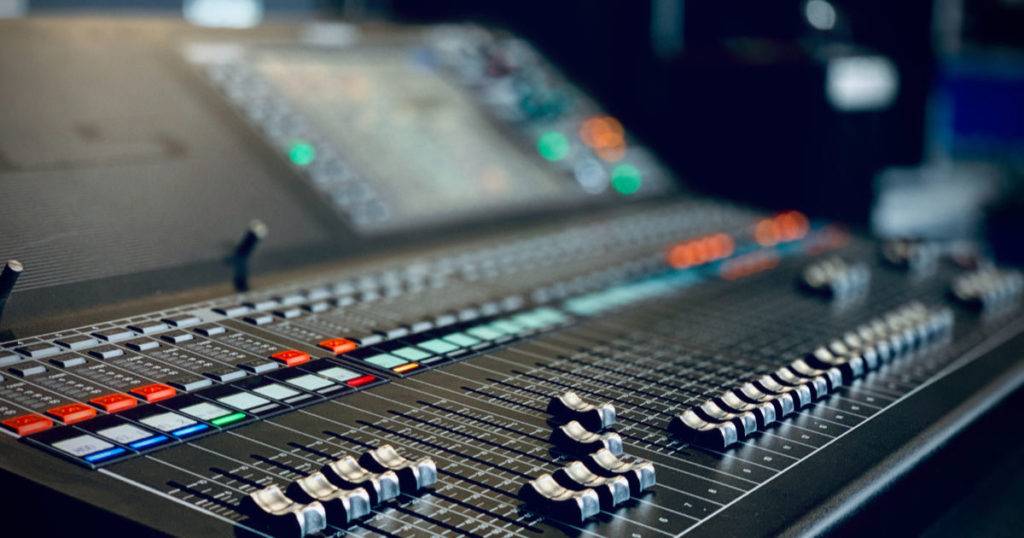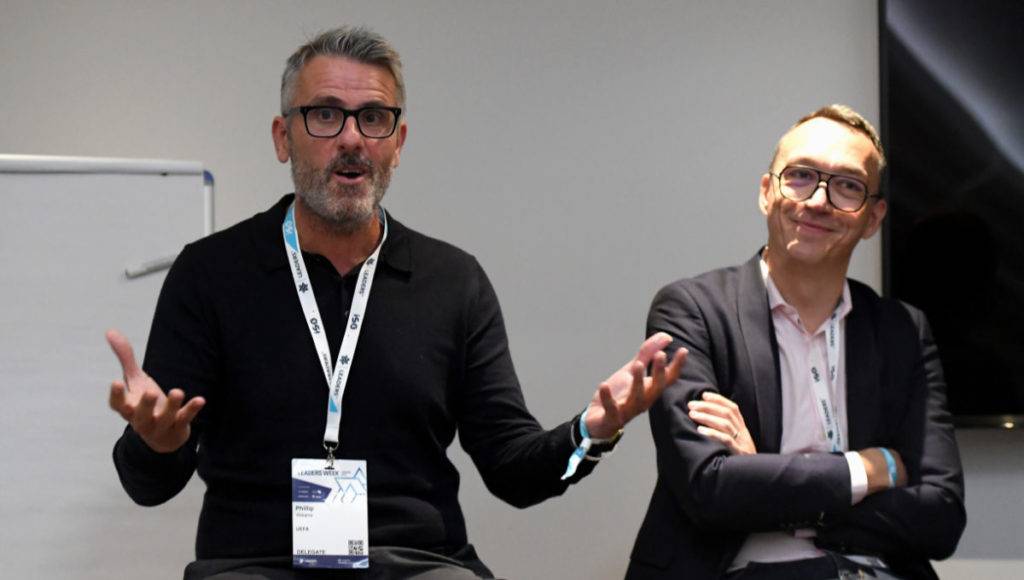Sports leagues and their media rights-holding broadcasters are racing to close the gap between some long-standing content divides, and authentic digital moments are filling that void.
Fans traversing mobile screens daily are hunting for great sports content. So these sports broadcasters are moving beyond linear broadcasts. They’re building out the capacity to deliver more authentic digital moments for fans. They’re using the short-form media that leagues are now delivering to them as part of their media rights deals.
This past year, we’ve seen authentic digital content on social platforms reach bigger audiences — far beyond the limits of linear, long-form sports broadcasts.
Leading sports broadcast executives now know how critical it is to capture and distribute engaging images and authentic creator-captured videos that captivate younger fans on mobile devices. They realize the need to expand this side of the house while continuing to improve the traditional broadcast TV experience at the same time. This new ‘short-form content ‘ strategic imperative affects all sports broadcasters, regardless of their market size or global region.
Successful sports organizations are keeping their feet in both camps. They’re delivering more camera angles and stats for enhanced linear broadcast. And they’re now collecting and sharing more jaw-dropping game highlights and personal behind-the-scenes moments that are captured specifically for social media. Snackable bits feed the distinct, multi-platform stories that fans love. And they build tremendous value for media rights and sponsorship deals.
This approach to short-form media in sports broadcast was the topic at an exclusive Leaders Week London 2022 workshop: The Digital Side of Broadcast: How Rights Holders Are Delivering More Value With Short-form Media. Sébastien Audoux, Head of Sports Digital Content at CANAL+, and Phillip Williams, Head of Editorial Content Services at UEFA, joined Greenfly CEO Daniel Kirschner for this session.
The trio reviewed how linear broadcast and authentic digital moments fit together. They also discussed how short-form media built for mobile stacks up against traditional linear content. And they shared how to get it quickly to partners and fans.
“Even if it’s not content for TV, it’s still very much important. And you could do a lot more views sometimes on social media than on TV.”
Sébastien Audoux, Head of Sports Digital Content, CANAL+

Authentic Digital Moments Built for Social Beat Repurposed Media
Audoux, who leads all digital sports outputs for CANAL+, discussed their strategies and uses for short-form content. He moved from the broadcast to the digital side when the focus was on repurposing 16×9 content from live sports footage, for mainly Facebook and Twitter. Since then, his team has seen a massive evolution. It now produces multiple types of content, including 16×9, square and vertical formats and more. And they’ve expanded their platforms to include popular channels such as TikTok, Twitch and Snapchat.
As he detailed, “The company went from having a very straightforward basic strategy around repurposing live sports clippings to having millions of different strategies around different platforms and different formats.” They found that basic live event footage is not necessarily the best-performing content, particularly on these more avant-garde platforms. Rather, behind-the-scenes and other produced content does very well versus relying on live content. They learn by testing different types of local content.
Kirschner shared that Greenfly has observed this trend as well. Moving highlight clips from broadcast to social and other digital platforms is still very valuable. But there’s an increasing appreciation for how different these channels and formats are. That has spurred a need for a mobile-first approach to producing original short-form media. It’s a shift from thinking about repurposing or cutting existing content to going out and developing short content in the first place.
Williams oversees shoulder programming for broadcasters at UEFA and digital content throughout owned third-party platforms. He talked about how this view toward digital moments and short-form content came to pass, noting technology has played a large role in helping leagues reimagine how to deliver content to broadcasters. When content delivery was happening only via satellite, they were limited in what they could distribute. They focused primarily on shortening content for their magazine shows and deemed it “digital-first”. But this repurposed media’s lack of authenticity stood out.
Now, his team is focused on understanding what content their digital-first audiences respond to and learning from that. This includes behind-the-scenes moments, immediate post-match content and tunnel shots. Wiliams cited a recent example of Luis Suarez walking out to the pitch in Barcelona; the athlete walked around it instead of across. This brief content got an amazing amount of engagement. His team found that “those moments are actually gold.” They started mining the more immediate, unexpected photos and videos — those authentic digital moments — rather than pre-planning them.

Mobile-First: Capturing Digital Moments That Feel Real to Audiences
The executives spoke about the demand for more authentic digital moments captured on mobile devices. This is the case, even with advanced broadcast equipment available for shooting high-resolution images.
For Audoux, a fan’s age tends to dictate what screen they use for content consumption. So subscription services need to produce mobile-first content for social platforms like TikTok, Twitter and Twitch, where the younger fans are. They can create a connection and entice them to subscribe to the service. But recording that nimble content on phones is a stretch for broadcasters used to shooting with large equipment and crews. And it requires more budget and testing to figure out what works well.
Williams revealed they have vertical-first content producers on site at matches and events to capture authentic, behind-the-scenes media. They work in that medium, know how to shoot it, and can access the best places to capture it on site. And they’ve explored tapping them and even fans to shoot in-match ancillary content for partners. This content that people could shoot themselves feels more real and relatable to audiences.
Kirschner said that what feels authentic and natural to people depends on the screen they use to consume that content. And modern fans have become more sophisticated in that consumption. They don’t just want to watch a match. They want to understand the dynamics and energies of the teams and players beyond the pitch, which mobile captures well.
Bringing Mobile Fans Into the Broadcast Experience
Audoux spoke about how he views mobile content delivery in the context of his service’s overall broadcast experience. They built the MyCANAL app as a first-screen mobile experience. The app has grown from basic stats and near-live highlights to game viewing and the interactivity fans crave on social media. They’re gathering viewer insights on game elements to build editorial content from fan comments.
Williams discussed that his team takes a holistic view of creating a shared football experience for audiences. It’s crucial for them to highlight the stadium moments fans would otherwise miss from the broadcast to engage them further.
Short-form content is also used to maintain and build momentum beyond the broadcast. Those storylines can keep fans connected and promote broadcasts between matches and throughout the season and year.
He also shared that it’s a strong driver for the league to support their broadcasters’ on-air league promotion in ways they couldn’t do themselves. They accomplish this by providing content to use immediately after matches and on the following days. Kirschner added that short-form media lets fans do what they love: relive particular moments.

The Importance of Sharing Short-form Media and Digital Moments Far and Wide
Kirschner explained Greenfly’s approach to building an infrastructure and system where content isn’t siloed, used once (or not at all), and then lost to the ages. Instead, it can be organized and shared immediately across clubs and rights-holder organizations. It can support their ecosystem by enabling them to do some of their own content capture. And it can help them experiment to learn what resonates with fans, which may vary across regions.
Williams noted that sharing this media on a platform that makes it quick and intuitive to share helps that process work effectively. He added that his team makes content like TikTok reels and YouTube shorts for social platforms. This content helps inform what can be successful on owned platforms and benefits their broadcasters, too.
And Audoux offered that in this digital world of sports, being more collaborative and making a concerted effort to share digital content is increasingly important. It means that it’s key that rights holders have a proper purpose-built platform to efficiently distribute content from B2B to B2C and across stakeholders and social channels.
Short-form Media Offers Insights and Opportunities
While Audoux spoke about the challenge in interpreting and comparing analytics of fan behaviors from social platforms versus owned platforms, Williams shared how his team uses short-form media to understand their fans’ habits. His staff is focused first on content creation to build the audience, then looking at it from a business perspective. He noted that during the 2019 Women’s World Cup, the two best-performing videos at CANAL+ were:
- Japanese fans cleaning the stadium up themselves after the match
- Alex Morgan testing the pitch at the Groupama stadium in Lyon, barefoot
These clips each garnered millions of views.
Kirschner observed that the one key difference between short-form and traditional game content is the ability to get more detail on what resonates with fans and what doesn’t. For example, some of the most consistently top-performing social content for the NBA is athlete arrivals in their street clothes.
That opens up opportunities to put sponsors in the tunnel to make those moments actionable. Over time, this content offers audience learnings on what’s connecting with and exciting to them and what’s not. You can’t get that from broadcast ratings. They’re attached to elements like the quality of the broadcast, the importance of the match and who’s playing.

Your Content Is Not in Competition
The panel discussed the challenge of figuring out how to produce great content regardless of format or delivery method. And they covered how the content fits together and doesn’t compete.
Kirschner mentioned that broadcasters buy a bucket of media rights, which can be leveraged in many ways. That doesn’t even need to be about supporting a broadcast, from where the revenue is coming. Audiences are increasingly engaging and consuming shorter bits outside of just watching a game. Broadcasters also can monetize this short-form media. They can use it to connect with audiences to realize the value of those rights. He said, “You’re living in a world where people are going to go where they’re going to go, and you got to go there, too. You can’t just constantly focus on moving them around to the place you want them to be.”
There’s a balance between creating native social content and pushing audiences toward owned apps. As Audoux stated, “there’s the immediate value and then playing the long game around content.” Broadcasters need to provide content, give fans a reason to go to an app, and then provide more content during and around games to keep them there. And they need to bridge the gap between the onsite and onscreen experiences. Kirschner offered the example of the new NBA app, which puts streaming alongside short-form content.
“We’re all heading in the same direction; we’re all gunning for the same result. And this is something we’ve worked with our suppliers quite a lot to try and rid that specter of one video, one digital team, and one broadcast team, and never the twain shall meet.”
Phillip Williams, Head of Editorial Content Services, UEFA
Final Thoughts: Meeting Broadcaster Expectations
Audoux acknowledged that it’s impossible to produce on their own the amount of short-form match coverage they need to fill all their social platforms. So they need help from their league partners.
Williams added his league deems this content an additional program or offering to augment broadcast coverage when the broadcaster can’t send videographers to capture these moments. They recognize that it’s a vital part of their service to partners.
And Kirschner noted that this expectation of receiving short-form media from a sports league is a continuing trend. Buying rights to an event includes different components — not just the broadcast itself but this content, too.
He also shared that the key overall is to have a system that brings in this valuable real-time content. That’s short-form media coming from clipping tools, photography partners and professional photographers. And even fans, too. That’s all part of the great content and experience leagues should make available to broadcasters and other partners.

